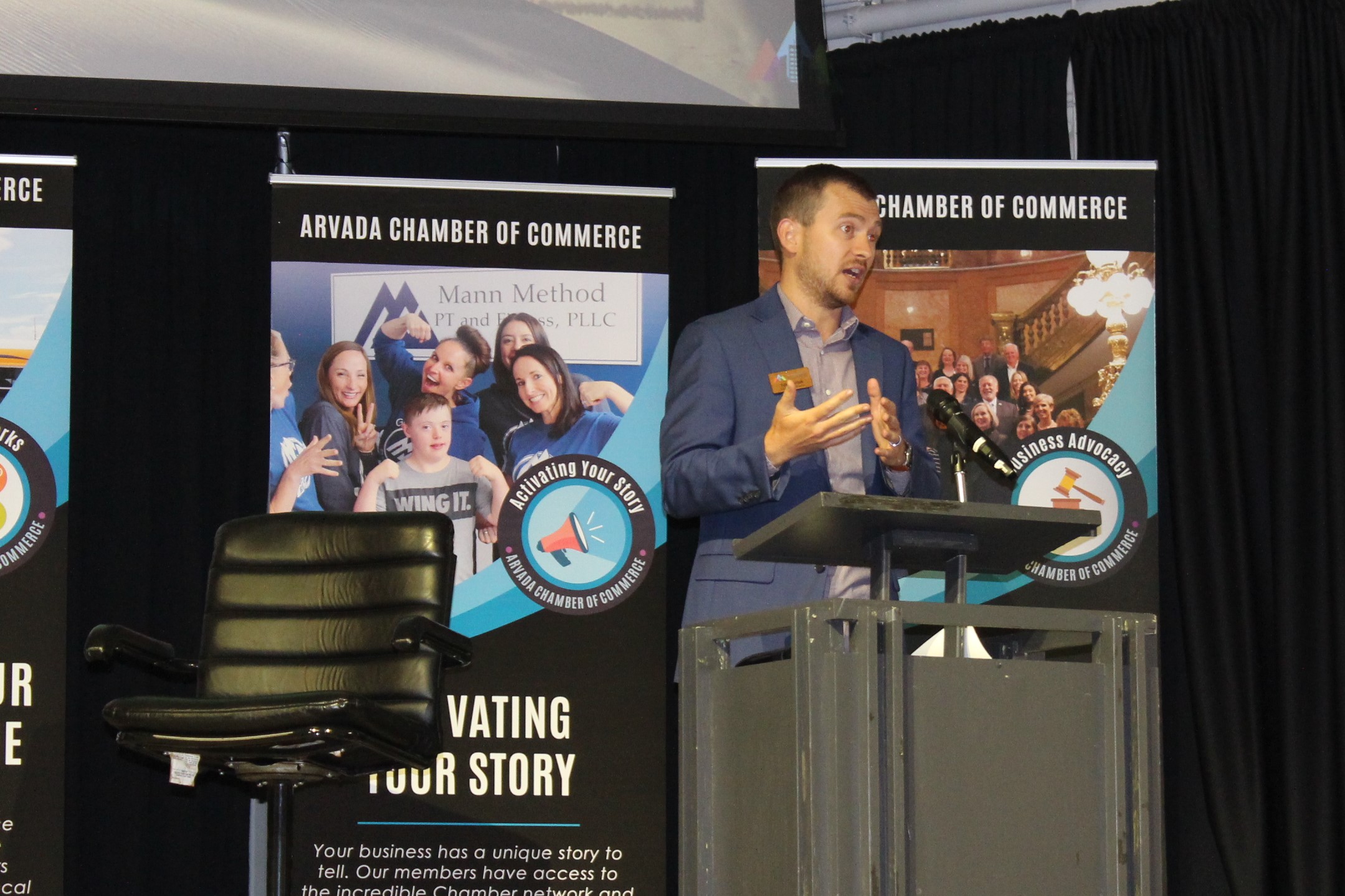
On June 18, 2021, the Arvada Chamber of Commerce hosted a Community Impact Forum on Smart Cities. The forum featured urban technology experts breaking down the trends in tech, AI and robotics that will change our community forever. Attendees heard current plans, timelines and unique innovations in Arvada and across Colorado.
Below, find a video recording of the event, bios of our speakers, and 5 takeaways from the event.
Video Recording:
Speaker Bios:

Tyler Svitak, Executive Director at Colorado Smart Cities Alliance
[su_spoiler title=”Read Bio” style=”fancy” icon=”chevron”]
Tyler Svitak has built his career solving problems at the intersection of technology and urbanism. Tyler has held strategic roles advancing electric, connected, and automated mobility initiatives at the City and County of Denver, Colorado Department of Transportation, and American Lung Association in Colorado, where he led or contributed to some of the most innovative smart mobility projects and policies in the country.
Tyler became the Executive Director of the Colorado Smart Cities Alliance in 2019, which is the first and only statewide coalition of public, private, academic and research organizations committed to advancing smart cities initiatives across sectors and jurisdictions. Tyler leads the membership-based organization as it develops a new model for building smarter communities and regions. The Alliance manages a portfolio of projects that leverage innovative technologies, like 5G, to improve challenges facing the state through partnership and real-world deployment.
[/su_spoiler]
Todd Hargrave, Regional Business Manager at Trimble
[su_spoiler title=”Read Bio” style=”fancy” icon=”chevron”]
Manager of the Smart Water operations for Trimble Water in Colorado. Trimble Water’s Smart Water business consists of IoT devices that monitor pressure, level, flow and quality for water and wastewater networks and deliver that data up to Trimble’s cloud data management application Unity.
[/su_spoiler]
Garrod Massey, Vice President at UCEC Smart
[su_spoiler title=”Read Bio” style=”fancy” icon=”chevron”]
Meshing 15 years of Industrial Control and Automation experience into commercial, retail, and building intelligence. Aiming to transform businesses with modern technology.
[/su_spoiler]
Bob Fifer, Branch Manager at CDOT and Arvada City Councilmember
[su_spoiler title=”Read Bio” style=”fancy” icon=”chevron”]
Bob has spent 27 years in telecommunication and IT industry domestically and abroad, leading several groups in engineering, operations, design, product development and vendor management. The last 4 years, he leads Colorado Department Transportation’s Intelligent Transportation Systems and Network Branch, where the Team engineers, operates and maintains all technology on the State’s highways. Bob is also appointed as the Chair of the State’s Broadband Advisory Board. Since 2011, he has served the community of Arvada, as At-Large City Councilmember and shares his passion for technology, transportation and public safety.
[/su_spoiler]
5 Takeaways:
- A smart city is an urban area that uses different types of electronic methods and sensors to collect data. Insights gained from that data are used to manage assets, resources and services efficiently; in return, that data is used to improve the operations across the city. “Smart cities, in reality, looks at how cities are using technology and adapting in real time to changes,” said Tyler Svitak.
- Svitak says, “The Internet of Things (IoT), applications, and data should not define Smart Cities. The process by which they solve problems should. Smart Cities are innovative problem solvers, collaborative partners, and technology enthusiasts, in that order.”
- Smart cities solutions can help with six problems facing Colorado today: Mobility, Civic Engagement and Connectivity, Public Safety, Data, Utilities and Housing.
- In terms of mobility, Svitak identified four major trends: electrification, automation, connectivity, and shared services. He mentions the plans of Arvada neighbor, Golden, testing out self-driving mini taxis in the near future, and the development of urban air taxis, which operate like helicopters.
- On the topic of connectivity, Svitak highlights that all new vehicles “talk” ten times per second, communicating updates and changes internally and the external environment. Currently, roads and phones have the ability to “talk” back to our vehicles. In the future, adaptive traffic signals will do the same, advancing infrastructure and safety features for our city.



0 Comments